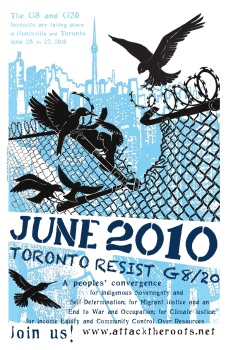Before making it illegal to circumvent TPMs, shouldn’t Canada make it mandatory for manufacturers to warn Canadians that the media and devices we buy use TPMs?
Especially since most Canadians don’t know what TPMs are?
Canadians don’t recognize TPMs.
- We think we are doing something wrong when we are prevented from copying digital photos we have taken of our own kids, with our own digital camera, to the hard drive on our own computer. We can’t tell if there is something wrong with the camera, the cable, the flash drive or the computer. It would never occur to us that the software has decided we are infringing copyright — especially since we aren’t. Our ability to copy our own digital content can be prevented accidentally or deliberately with TPMs (Technological Protection Measures).
- We don’t know the reason we have so much trouble trying to burn our home movies onto a DVD for Granny is because TPMs prevent the software from working properly. When TPMs (more commonly called “DRM” or “digital locks”) are added to our media and our devices the functionality is often degraded. In other words, to protect the intellectual property from consumer customers, TPMs that may break the thing are often considered an acceptable risk.
- We don’t know that our legally purchased DVD won’t play in our own DVD player because it is region encoded for a different region, another deliberate TPM. Consumers accept “region encoding” as a natural limitation of the technology, because we knew it was a physical limitation on VHS and PAL videotape formats. But the reality is that a DVD would play in any machine except that region encoding TPMs artificially prevent consumers from playing the DVDs we purchase on the device of our choosing.
- We don’t know that the DVD we legally purchased will not play on the digital device we own if it has a Free Software Operating System (gnu/linux) without first utilizing a player like VLC to circumvent the manufacturer’s TPMs — DRM or “digital locks.” Bill C-11 will make software like VLC illegal because it can be used to circumvent TPMs.
- We don’t know that we can’t save the YouTube video letter our grandchild uploaded for us because YouTube’s TPMs prevent this.
- We don’t know that when we’ve upgraded the hardware on our computer one too many times, the reason that our “improved” computer suddenly became a brick and simply will not work any more is because TPMs prevent it until we buy a new copy of the software. Bill C-11 will make it possible to prevent consumers from installing free software on our own computers.
- We don’t know that the Nineteen Eighty Four eBook we bought from Amazon disappeared from our Kindle because Amazon was simply exercising a is a deliberate TPM (Technical Protection Measure), more commonly called DRM or “digital locks.”
- We don’t know that the printer ink cartridge isn’t actually empty, but that the TPM has decided it is. Sometimes because we have made a certain number of copies, or maybe because there is a TPM which tells the printer that the cartridge can no longer be used after a certain date. So some printer cartridges can’t be refilled without resetting that date – which constitutes circumventing TPMs.
- We don’t know our scanner isn’t scanning those photographs because they have been “copy protected” with TPMs. Even though the photographer has (a) died (b) gone out of business or (c) long ago deleted the content from their drives. Further, we don’t realize that if we do find a way to scan the only copy of that milestone photograph of our loved one we will be circumventing TPMs, which will be illegal once Bill C-11 passes into law.
Not all TPMs are digital.
Some devices are assembled using specialty screws that can’t be turned with standard screw drivers. So you must possess the proprietary screwdrivers just to open it up. With Bill C-11 these screw drivers can be considered TPM circumvention devices, which will become illegal if Bill C-11 passes. Computer recycling depots, AV departments in schools and libraries, and of course repair shops across Canada will have to be very careful not to repair or refurbish any device with TPMs. It will be safer to throw many goods out rather than risking breaking the law to make repairs.
The Copyright symbol is a TPM. Overlaying the words “Do Not Copy” or some other kind of watermark on an image is another kind of TPM. Very often both of these TPMs are used in the commission of copyfraud. Creative work that was never “protected by copyright” (like the works of Shakespeare) or that have already entered the public domain (like the works of Oscar Wilde) are not subject to copyright. Anyone can use them, because the monopoly has expired. But there are a very large number of websites set up to sell copies of public domain art etc that claim copyright to which they have no right.
If copyright infringement is theft from the copyright holder, then copyfraud is theft from the public. Making copyfraud an offence would actually modernize Canadian copyright law, but as it stands, Bill C-11 will actually protect copyfraud, at the expense of Canadians.
TPMs effectively allow machines authority over human behaviour, and there is no appeal. How do you convince the hardware or software that it is in error?
No one tells us these things even *have* TPMs.
A great many of the problems we currently experience with our digital media and devices are caused by TPMs/DRM or “digital locks.”
Manufacturers place Technical Protection Measures on our media and devices in order to control our use of these things we own. They don’t want to draw attention to this; if they did, consumers might choose not to purchase the goods. As you can see from the examples shown, TPMs are capable of far exceeding “copy protection” and in many cases TPMs are currently employed to artificially impair the media or device to force consumers to upgrade or buy a new one. Which sounds rather like fraud to me.
What most consumers see is that something is broken. Some of us will take the digital goods back to the retailer, who will do their job and sell us a new one. Never mind that adding material that might be repaired but for Bill C-11 — perfectly good digital equipment — to our landfills is hardly in the public good.
Before Bill C-11, if the TPMs manufacturers added broke the goods we purchased, we could repair them. If the TPMs prevented us from accessing media that we were legally entitled to access, we could circumvent them. Or get someone who knew how to circumvent or repair them for us. Bill C-11 will make this illegal.
You can’t see most TPMs with the naked eye, so we can’t even tell if it is there because most TPMs are hidden. Which is why:
Bill C-11 Must Add Warning Labels
Citizens must be told:
- that TPMs are present, and
- what they do
Citizens can not be reasonably expected to follow the digital lock provisions of Bill C-11 without the inclusion of mandatory warning labels informing/explaining TPMs to consumers on “protected” media, including:
- movies,
- music,
- games,
- software,
- eBooks,
- images,
- services,
- etc.
and on “protected” digital devices such as:
- Computers,
- DVD players,
- CD players,
- game systems,
- eReaders,
- cell phones,
- cameras,
- digital drives,
- scanners,
- etc.
C-11 criminalizes circumvention of TPMs we don’t know are there
If Bill C-11 is passed without also mandating manufacturer warnings that inform consumers of the existence and parameters of the TPMs that we may not legally circumvent simply in trying to make our own digital media and devices work,
Bill C-11 will make all Canadians into inadvertent criminals
There is still a tiny bit of time left to contact our MPs and let them know we don’t want them to pass this Bill C-11 as it is There is still time to say “No”






